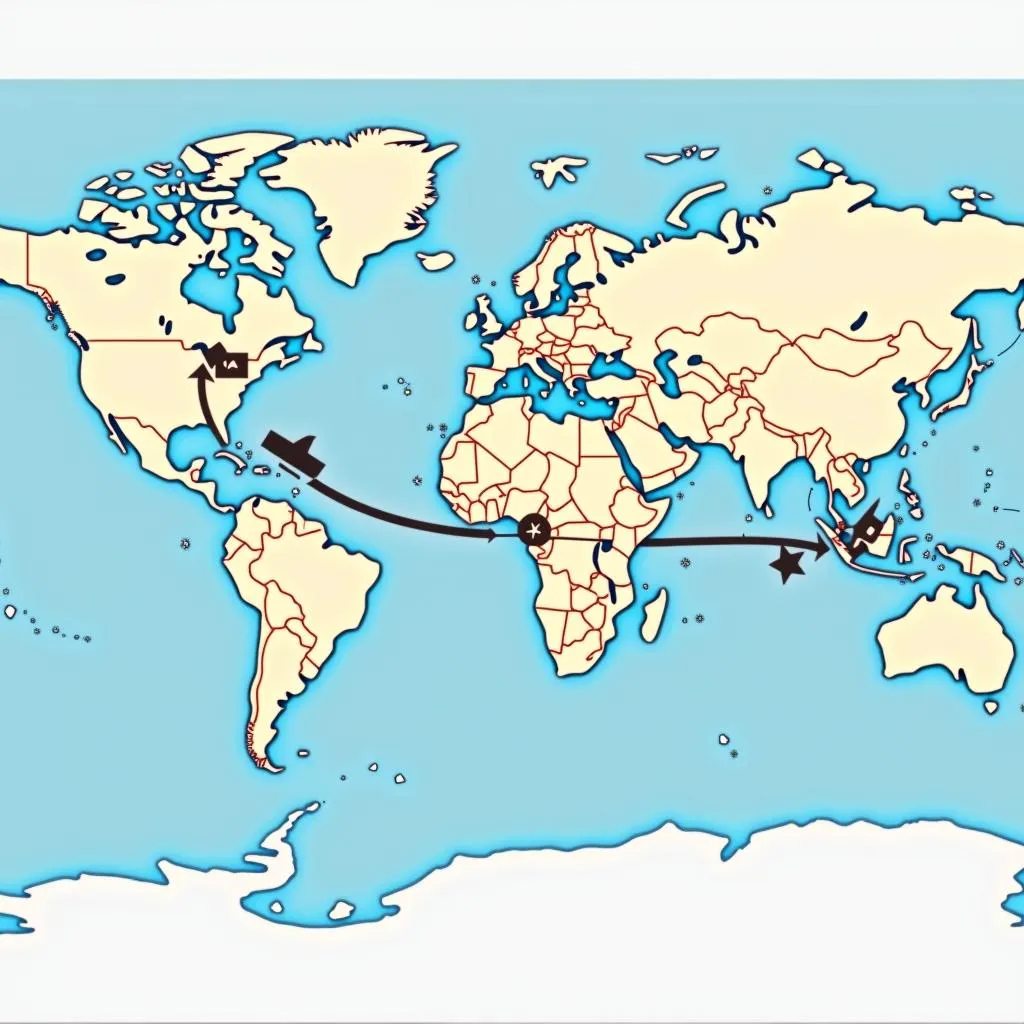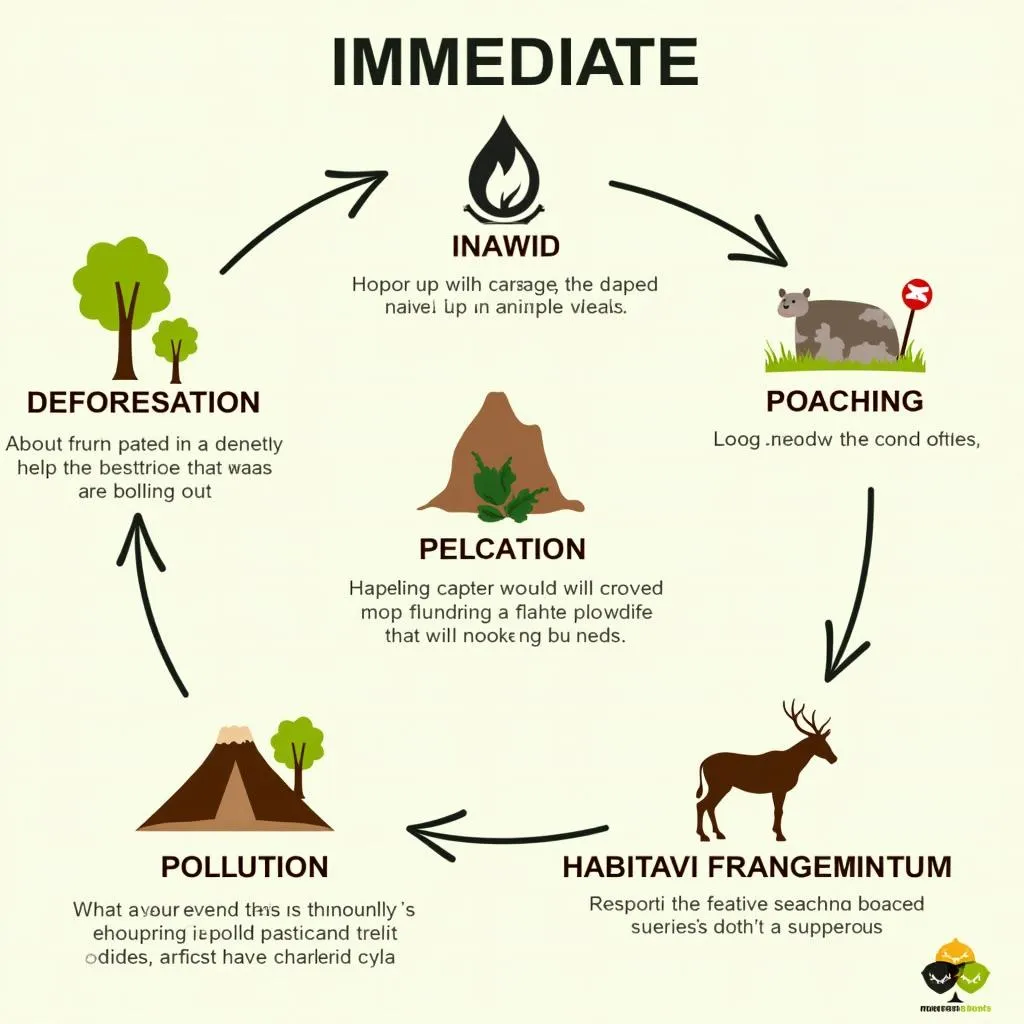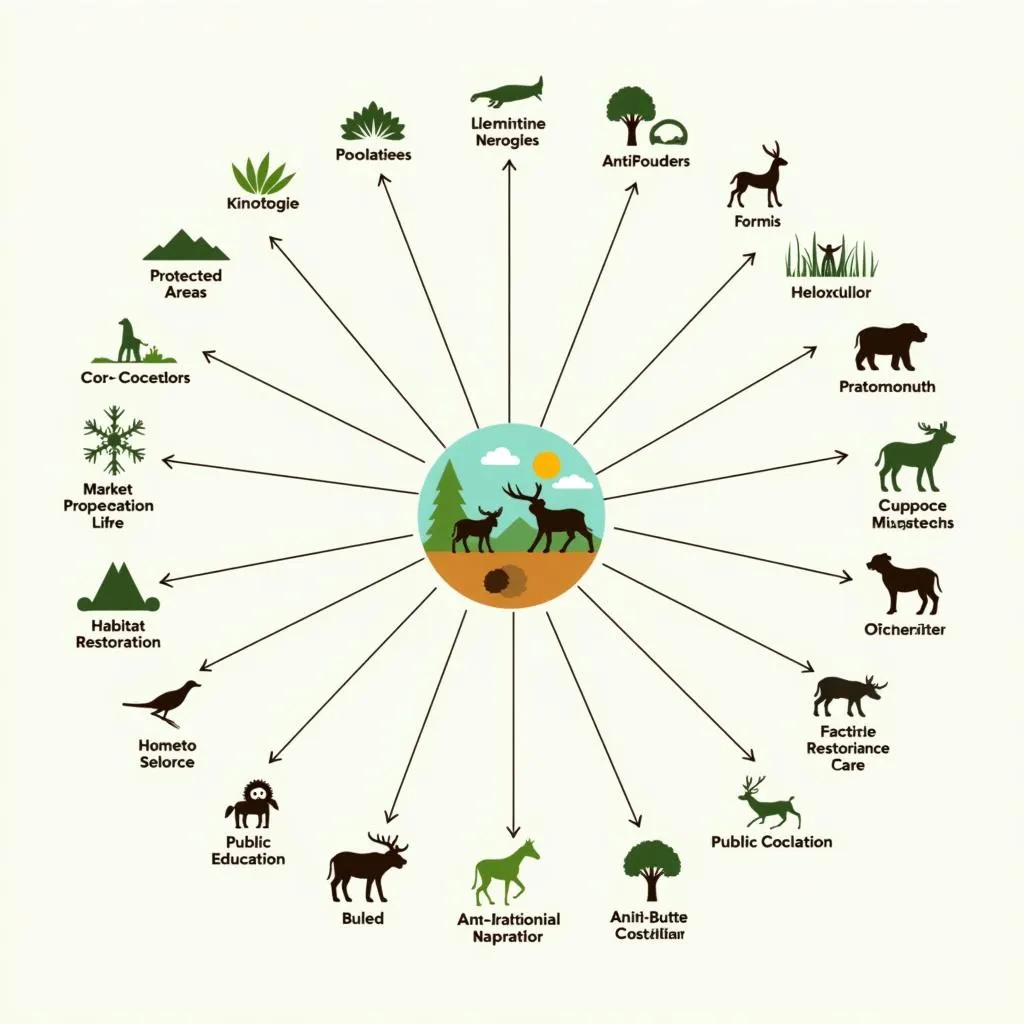Climate change and its effects on wildlife migration patterns have become increasingly prevalent topics in IELTS Writing Task 2 examinations. Based on recent trends and the growing global concern for environmental issues, it’s highly likely that this theme will continue to appear in future tests. To help you prepare, we’ve selected a relevant question that has appeared in past IELTS exams and closely aligns with our key topic.
Let’s examine a sample question and provide model essays for different band scores, along with detailed analyses to help you understand the scoring criteria and improve your writing skills.
Some people believe that climate change is the biggest threat to the world’s wildlife. Others think there are more immediate dangers.
Discuss both views and give your own opinion.
Question Analysis
This question requires you to discuss two contrasting viewpoints on the threats facing wildlife:
- Climate change as the primary threat
- Other more immediate dangers
You need to explore both perspectives and then provide your own opinion on the matter. This type of question tests your ability to:
- Understand and analyze different viewpoints
- Present balanced arguments
- Express your personal stance with supporting reasons
- Organize your ideas coherently
- Use appropriate vocabulary and grammatical structures
Now, let’s look at sample essays for different band scores, starting with a Band 8 essay.
Band 8 Essay Sample
Climate change has emerged as a significant concern for wildlife conservation in recent years. While some argue that it poses the greatest threat to the world’s fauna, others contend that more immediate dangers require urgent attention. This essay will examine both perspectives before presenting my own viewpoint.
Those who consider climate change the most critical threat to wildlife point to its far-reaching and long-lasting impacts. Rising temperatures and changing weather patterns are altering habitats on a global scale, forcing animals to adapt or migrate to survive. For instance, polar bears are losing their Arctic ice habitats, while coral reefs are dying due to ocean acidification. These changes occur gradually but have profound consequences for entire ecosystems and food chains.
On the other hand, proponents of the opposing view argue that more immediate dangers pose a greater threat to wildlife. Deforestation, poaching, and pollution are examples of direct human activities that cause rapid and severe damage to animal populations. The destruction of the Amazon rainforest, for example, leads to immediate habitat loss for countless species. Similarly, the illegal wildlife trade continues to decimate populations of rhinos, elephants, and tigers at an alarming rate.
In my opinion, while climate change is undoubtedly a severe long-term threat, the immediate dangers faced by wildlife cannot be overlooked. I believe that both issues are interconnected and equally important. Addressing immediate threats can help build resilience in wildlife populations, making them better equipped to face the challenges posed by climate change. Moreover, many of the actions required to combat immediate threats, such as preserving forests and reducing pollution, also contribute to mitigating climate change.
In conclusion, both climate change and more immediate human-induced threats pose significant dangers to the world’s wildlife. A comprehensive approach that addresses both short-term and long-term challenges is essential for effective wildlife conservation.
(Word count: 309)
 Climate change impact on wildlife migration patterns
Climate change impact on wildlife migration patterns
Band 8 Essay Analysis
This essay demonstrates excellent qualities that justify a Band 8 score:
-
Task Achievement: The essay fully addresses all parts of the task, discussing both viewpoints and clearly presenting a personal opinion. It provides well-developed ideas and relevant examples.
-
Coherence and Cohesion: The essay is well-organized with clear progression throughout. It uses a range of cohesive devices effectively, such as “While some argue,” “On the other hand,” and “In my opinion.”
-
Lexical Resource: The vocabulary used is sophisticated and precise, with words like “far-reaching,” “profound consequences,” and “decimate populations.” There’s also good use of topic-specific vocabulary.
-
Grammatical Range and Accuracy: The essay demonstrates a wide range of grammatical structures used accurately and appropriately. Complex sentences are used effectively, and there are no noticeable errors.
-
Development of Ideas: Each main point is well-developed with explanations and examples, showing a depth of understanding of the topic.
Now, let’s examine a Band 7 essay on the same topic.
Band 7 Essay Sample
The impact of climate change on wildlife has become a topic of intense debate in recent years. While some people consider it the most significant threat to animal species worldwide, others believe that more immediate dangers pose a greater risk. This essay will discuss both viewpoints before offering my personal opinion.
Those who view climate change as the primary threat to wildlife argue that its effects are far-reaching and potentially irreversible. Global warming is altering habitats and disrupting ecosystems on a massive scale. For example, rising sea levels are threatening coastal species, while changing temperatures are forcing many animals to migrate to new areas where they may struggle to survive. These gradual but persistent changes affect entire food chains and could lead to widespread extinctions.
However, others contend that more immediate dangers pose a greater risk to wildlife. Deforestation, pollution, and illegal hunting are examples of human activities that cause direct and rapid harm to animal populations. The destruction of the Amazon rainforest, for instance, results in immediate habitat loss for countless species. Similarly, plastic pollution in oceans is killing marine life at an alarming rate. These threats have visible and measurable impacts in the short term.
In my opinion, both climate change and immediate threats are significant concerns for wildlife conservation. While climate change presents a long-term, global challenge, immediate dangers often require urgent action to prevent irreversible damage. I believe that addressing both types of threats is crucial for protecting biodiversity.
To conclude, climate change and more immediate human-induced dangers both pose significant risks to wildlife. A balanced approach that tackles both long-term environmental changes and immediate threats is necessary to ensure the survival of the world’s diverse animal species.
(Word count: 282)
 Immediate threats to wildlife conservation
Immediate threats to wildlife conservation
Band 7 Essay Analysis
This essay demonstrates good qualities that justify a Band 7 score:
-
Task Achievement: The essay addresses all parts of the task, discussing both viewpoints and presenting a personal opinion. The ideas are relevant and supported, though not as fully developed as in the Band 8 essay.
-
Coherence and Cohesion: The essay is well-organized with clear overall progression. It uses cohesive devices, though not as flexibly as the Band 8 essay.
-
Lexical Resource: The vocabulary is appropriate and accurate, with some less common words like “irreversible” and “biodiversity.” However, it doesn’t demonstrate the same level of sophistication as the Band 8 essay.
-
Grammatical Range and Accuracy: The essay uses a mix of simple and complex sentence structures accurately. There are no significant errors, but it doesn’t show the same variety of structures as the Band 8 essay.
-
Development of Ideas: Each main point is supported with relevant examples, though the explanations are not as detailed as in the Band 8 essay.
Now, let’s look at a Band 6 essay on the same topic.
Band 6 Essay Sample
Nowadays, many people are worried about the animals in our world. Some think that climate change is the biggest problem for animals, but others say there are more dangerous things happening right now. I will talk about both ideas and give my own thoughts.
People who think climate change is the worst problem for animals say it’s because it changes the whole world. When the Earth gets warmer, it makes life hard for animals. For example, polar bears can’t find enough ice to live on, and some birds have to fly to new places to find food. These changes happen slowly but they affect many animals.
But other people think there are bigger problems happening right now. They say things like cutting down forests and hunting animals illegally are more dangerous. When we cut down trees, animals lose their homes right away. Also, when people hunt rare animals to sell them, it can make those animals disappear very fast.
I think both ideas are important. Climate change is a big problem that will hurt animals for a long time. But the other problems are also very serious and need to be fixed quickly. If we don’t stop cutting down forests and hunting rare animals, many species might be gone before climate change becomes worse.
In conclusion, I believe we need to worry about both climate change and the immediate dangers to animals. We should try to solve all these problems to keep our animals safe.
(Word count: 253)
 Wildlife conservation strategies
Wildlife conservation strategies
Band 6 Essay Analysis
This essay demonstrates adequate qualities that justify a Band 6 score:
-
Task Achievement: The essay addresses the task, covering both viewpoints and offering a personal opinion. However, the ideas are not as fully developed as in higher band essays.
-
Coherence and Cohesion: The essay has a clear structure, but the progression of ideas is not always smooth. Basic cohesive devices are used, but sometimes repetitively.
-
Lexical Resource: The vocabulary is adequate for the task, but limited in range. There are some attempts at less common words, but the language is generally simple.
-
Grammatical Range and Accuracy: The essay uses a mix of simple and complex sentences, but with less variety than higher band essays. There are some grammatical errors, but they do not impede communication.
-
Development of Ideas: Main points are presented with some support, but the explanations lack depth and detail compared to higher band essays.
Key Vocabulary to Remember
-
Climate change (noun) – long-term changes in temperature and weather patterns
Pronunciation: /ˈklaɪmət tʃeɪndʒ/ -
Wildlife (noun) – animals living in the wild, especially in a natural, undomesticated state
Pronunciation: /ˈwaɪldlaɪf/ -
Ecosystem (noun) – a biological community of interacting organisms and their physical environment
Pronunciation: /ˈiːkəʊˌsɪstəm/ -
Biodiversity (noun) – the variety of plant and animal life in the world or in a particular habitat
Pronunciation: /ˌbaɪəʊdaɪˈvɜːsəti/ -
Deforestation (noun) – the action of clearing a wide area of trees
Pronunciation: /diːˌfɒrɪˈsteɪʃn/ -
Poaching (noun) – the illegal practice of hunting or catching wild animals
Pronunciation: /ˈpəʊtʃɪŋ/ -
Habitat (noun) – the natural home or environment of an animal, plant, or other organism
Pronunciation: /ˈhæbɪtæt/ -
Conservation (noun) – preservation, protection, or restoration of the natural environment and of wildlife
Pronunciation: /ˌkɒnsəˈveɪʃn/ -
Extinction (noun) – the state or process of a species ceasing to exist
Pronunciation: /ɪkˈstɪŋkʃn/ -
Mitigation (noun) – the action of reducing the severity, seriousness, or painfulness of something
Pronunciation: /ˌmɪtɪˈɡeɪʃn/
In conclusion, the topic of climate change and its impact on wildlife migration patterns is likely to remain relevant in IELTS Writing Task 2 examinations. To prepare effectively, practice writing essays on related themes, such as:
- The role of governments in wildlife conservation
- The effects of climate change on extreme weather events and their impact on ecosystems
- Balancing economic development with environmental protection
- The importance of biodiversity in maintaining ecological balance
Remember to structure your essays clearly, use a range of vocabulary and grammatical structures, and support your arguments with relevant examples. We encourage you to practice writing an essay on the topic discussed in this article and share it in the comments section for feedback and further improvement.


